This creamy Delicata Squash Pasta has a rich flavor that even picky eaters will reach for more of! It's healthy thanks to a pile of squash, but decadent due to the homemade brown butter sage sauce, wilted kale, and ricotta cheese.
If you love easy squash dishes, try my air fryer frozen butternut squash or roasted spaghetti squash boats.
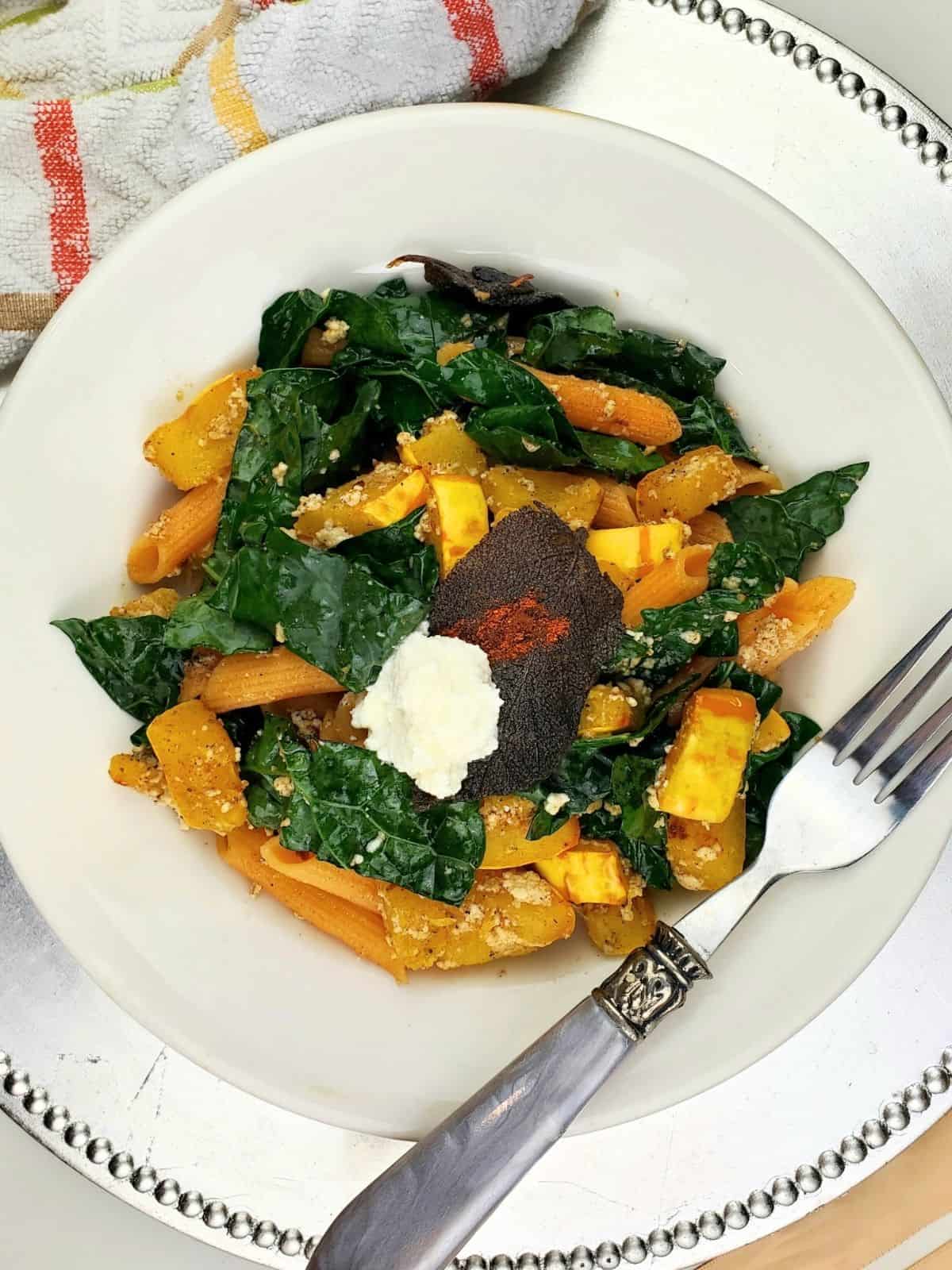
Jump to:
- 🌟 Why this recipe is great
- 😋 Ingredients
- 🔪 How to prep & cut delicata squash
- 📖 How to make delicata squash pasta: step-by-step instructions
- 📝 Substitutions
- 🥘 Freezing and reheating
- 👨🏻🍳 Expert notes & tips
- ⭐ Other squash recipes
- 🙋🏻♂️ Frequently asked questions
- 🧂 What to serve with delicata squash pasta
- 📖 Recipe
- 💬 Comments
🌟 Why this recipe is great
Simple Enough for Beginners: When looking to cook delicata squash with pasta, it doesn't get much easier than just washing, cutting, and tossing the squash pieces in oil & seasoning, and then frying them up nice and crispy with some pasta.
Great Source of Vitamin A: Just like my air fryer butternut squash, this delicata squash pasta is high in fiber and nutrients like vitamins A and C, as well as smaller amounts of potassium, magnesium, and manganese.
Low Histamine Dinner: this winter squash pasta recipe may take a little more time than some of my other squash recipes, but I promise it's worth it. This delicious dinner is fully of flavor and delightfully low in histamine.
😋 Ingredients

Delicata Squash: Also called sweet potato squash thanks to their sweet and mild nutty flavor, delicatas are a relatively delicate winter squash with thin edible skin and a creamy taste and texture.
They come from a vining plant, and like butternut squash, these striped green and orange fruits can be stored many months (into wintertime) and taste just as good stir-fried.
Unsalted Butter: while delicatas are most commonly baked, they can also be microwaved, steamed, air fried, or sautéed like we do here. For that you need a cooking oil that's safe to use at higher temps, like the butter I've used here.
Kale Leaves - all you need is to wash them, remove the fines, and slice thinly.
Ricotta Cheese - you can use any type of cheese you'd like here, but I like ricotta for the balanced fat and protein content.
Fresh Garlic - you'll need to mince it, you you can also slice it if you don't mind large pieces of roasted garlic.
Sage - you can use fresh or frozen sage here, but not dried.
Seasoning: while this is technically optional, I highly recommend using 1 to 1 ½ teaspoons of your favorite tolerated seasoning, in this case sweet paprika, nigella seeds, and salt.
Uncooked Pasta of Choice - I use lentil here, but you can also use anything from regular wheat pasta to cassava flour pasta.
Exact amounts are listed in the recipe card.
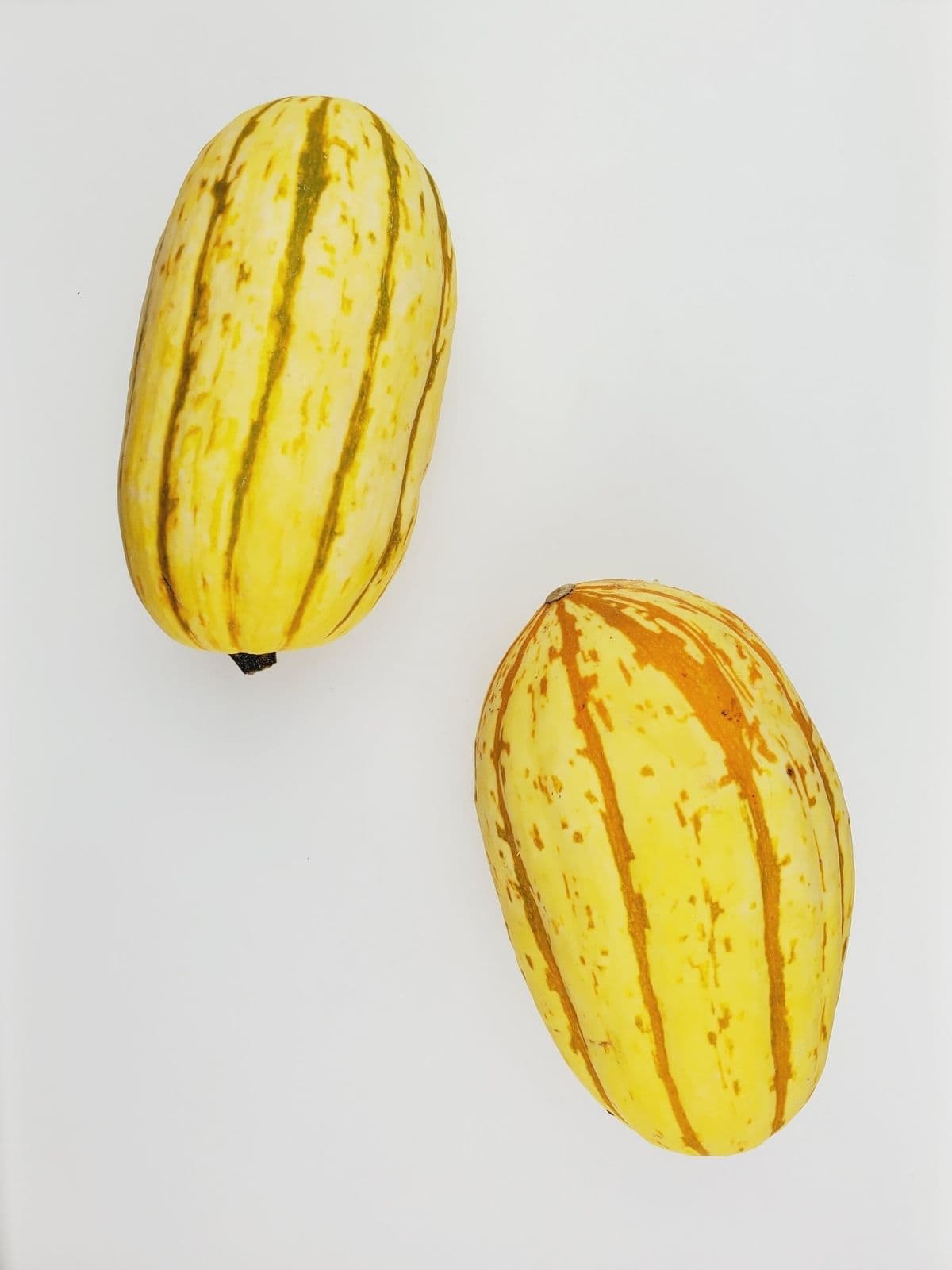
🔪 How to prep & cut delicata squash
Delicata winter squash have edible skin and a relatively long harvest season, as in my area I start seeing them in the farmer's market in early August. However they can be hard to cut, despite their reputation for being delicate (hence the name).
- The best way to prep a delicata squash for any cooking method is to start by washing and lightly scrubbing your delicata. Since the skin is edible, delicatas don't need to be peeled, so we want the outside super clean.
- Then cut off the top and bottom, and cut the squash in half. Use a large spoon to scoop out the seeds and innards.
- Next cut each half in half, and then you can either cook the squash from there or slice the squash as desired. See directly below for images and more detailed step-by-step instructions.
Remember: the seeds can also be roasted and eaten! Don't toss them if you enjoy pumpkin seeds, as they're very similar.
📖 How to make delicata squash pasta: step-by-step instructions
Step 1. Put a pot of water on to boil, adding salt to the water, if desired. While the water heats up, wash and lightly scrub your delicata squash; since the skin is edible, delicata squash doesn't need to be peeled, so we want to make sure the outside is clean enough to eat.
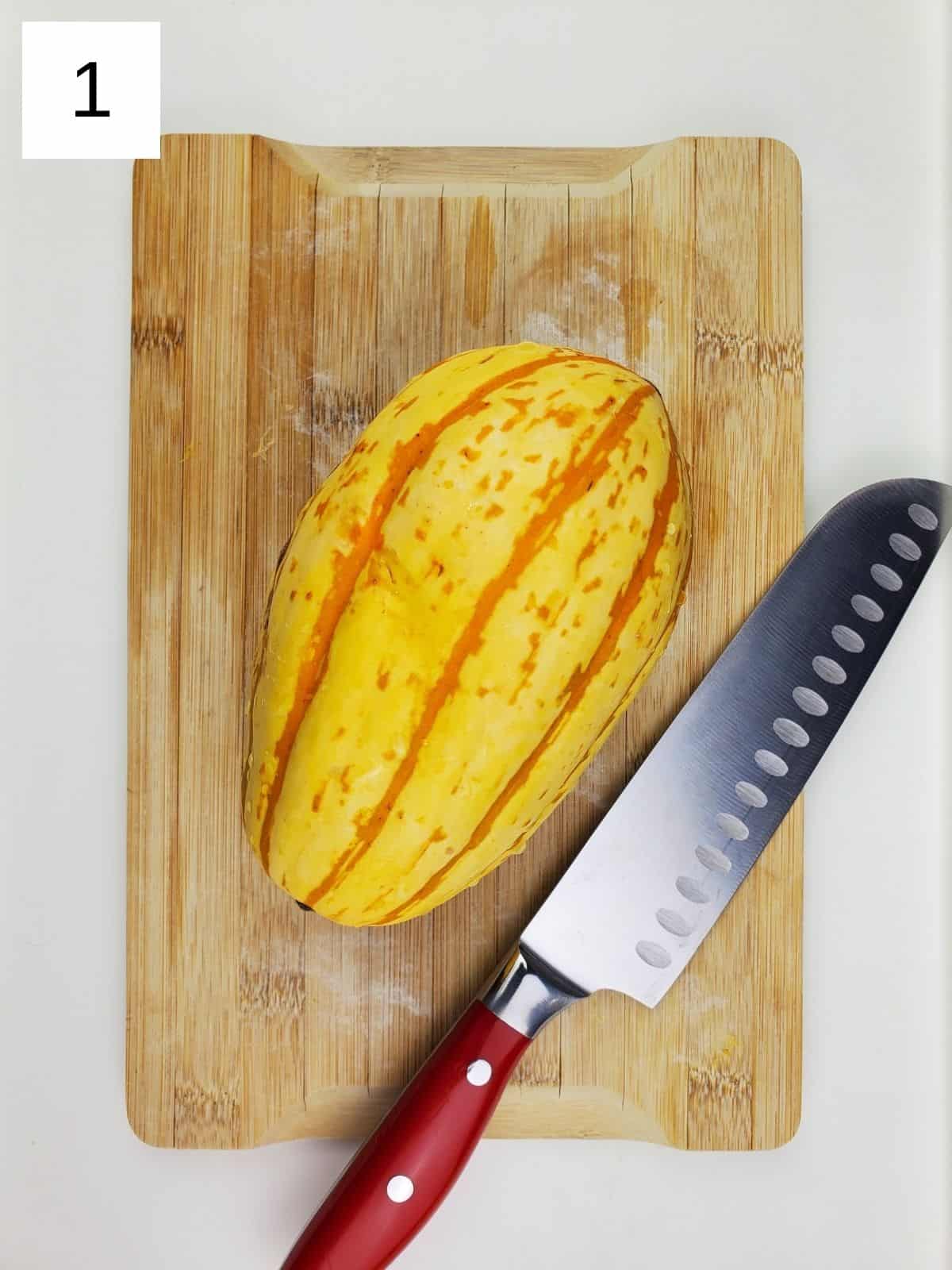

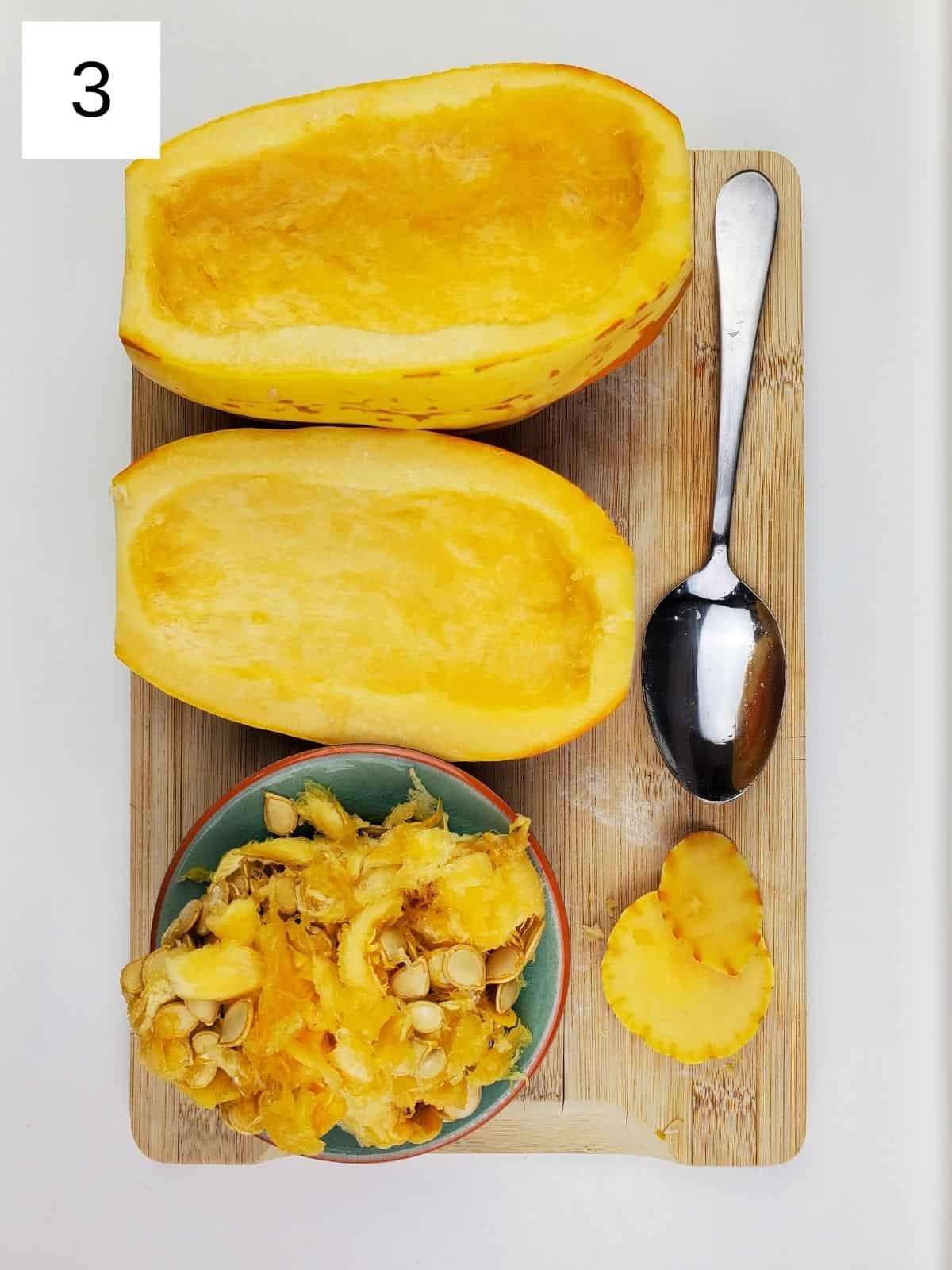
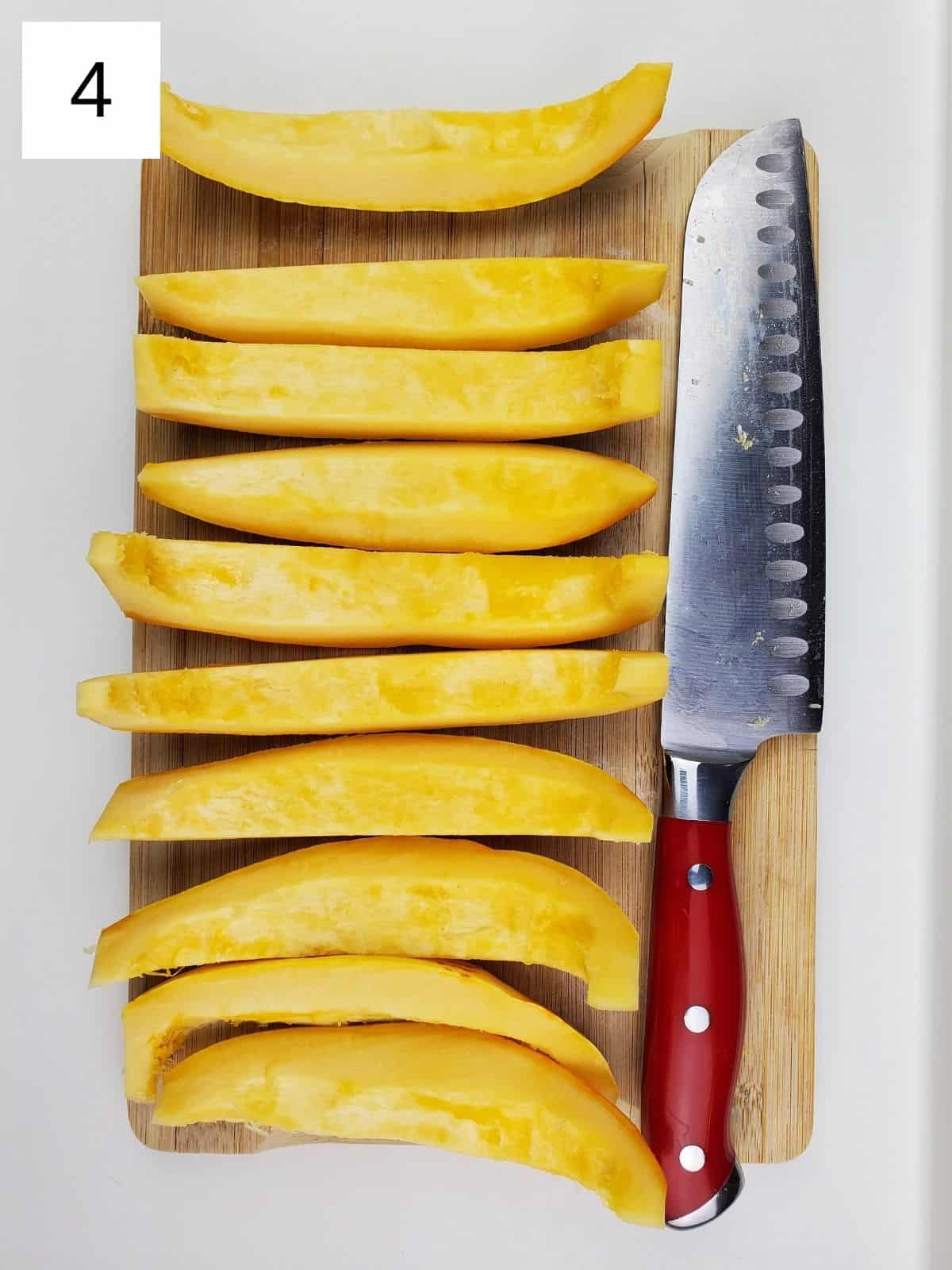
Step 2. Once clean, cut off the top & bottom then cut the squash in half and use a spoon to scoop out the seeds and innards, and either set aside the seeds to clean and roast or discard everything (just like pumpkin seeds, delicata squash seeds are totally edible once cooked!).
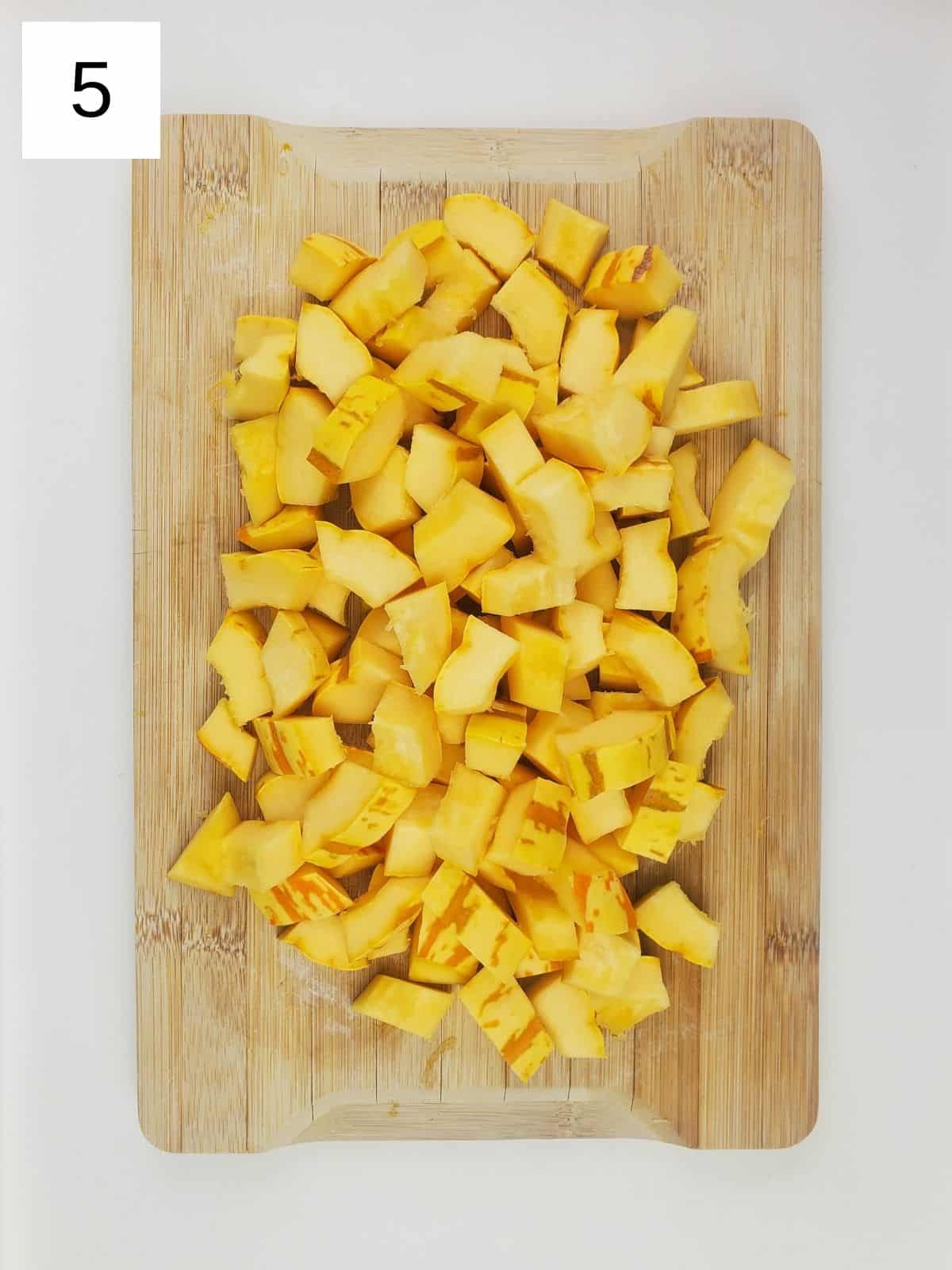
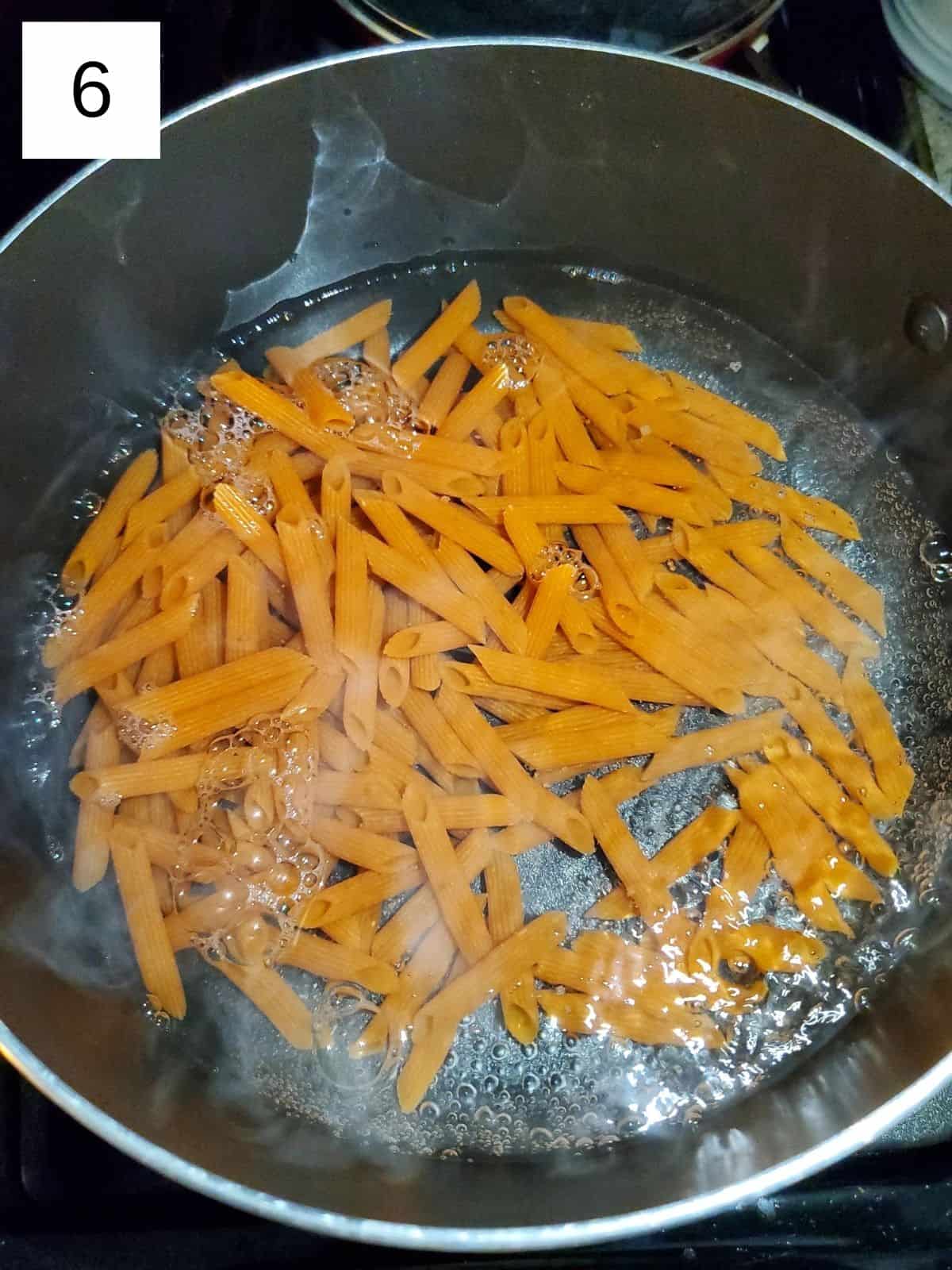
Step 3. Next slice each squash half lengthwise into four to six long pieces, so you have eight to ten pieces in total. These long pieces will be much easier to cut into oblong cubes, so hold each half together so that you're cutting all four long pieces at once, and chop each half into cubes.
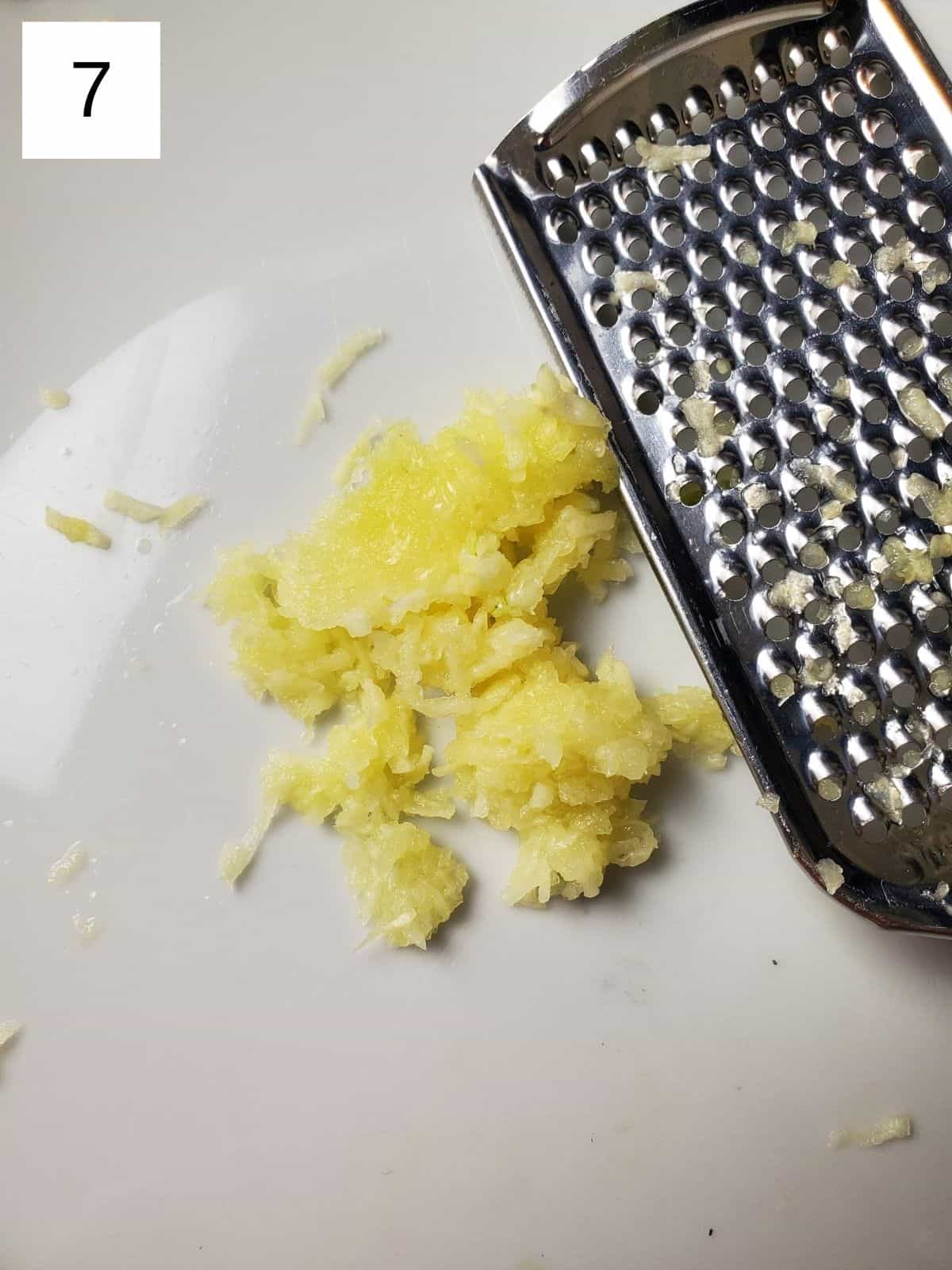
Step 4. Once the squash is all cut, your water should be ready to add the pasta, so pour in your pasta and set a timer according to the package instructions.
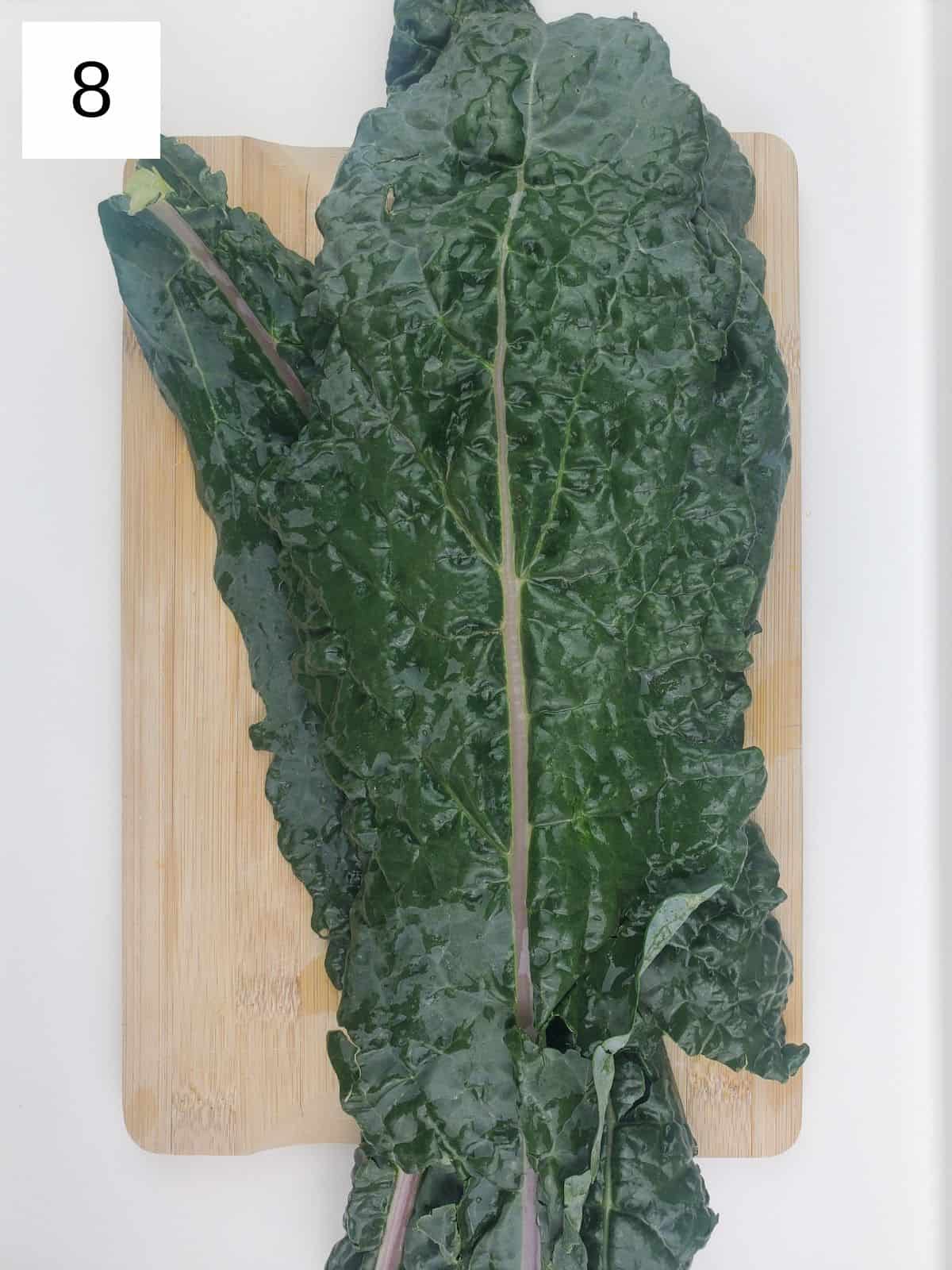
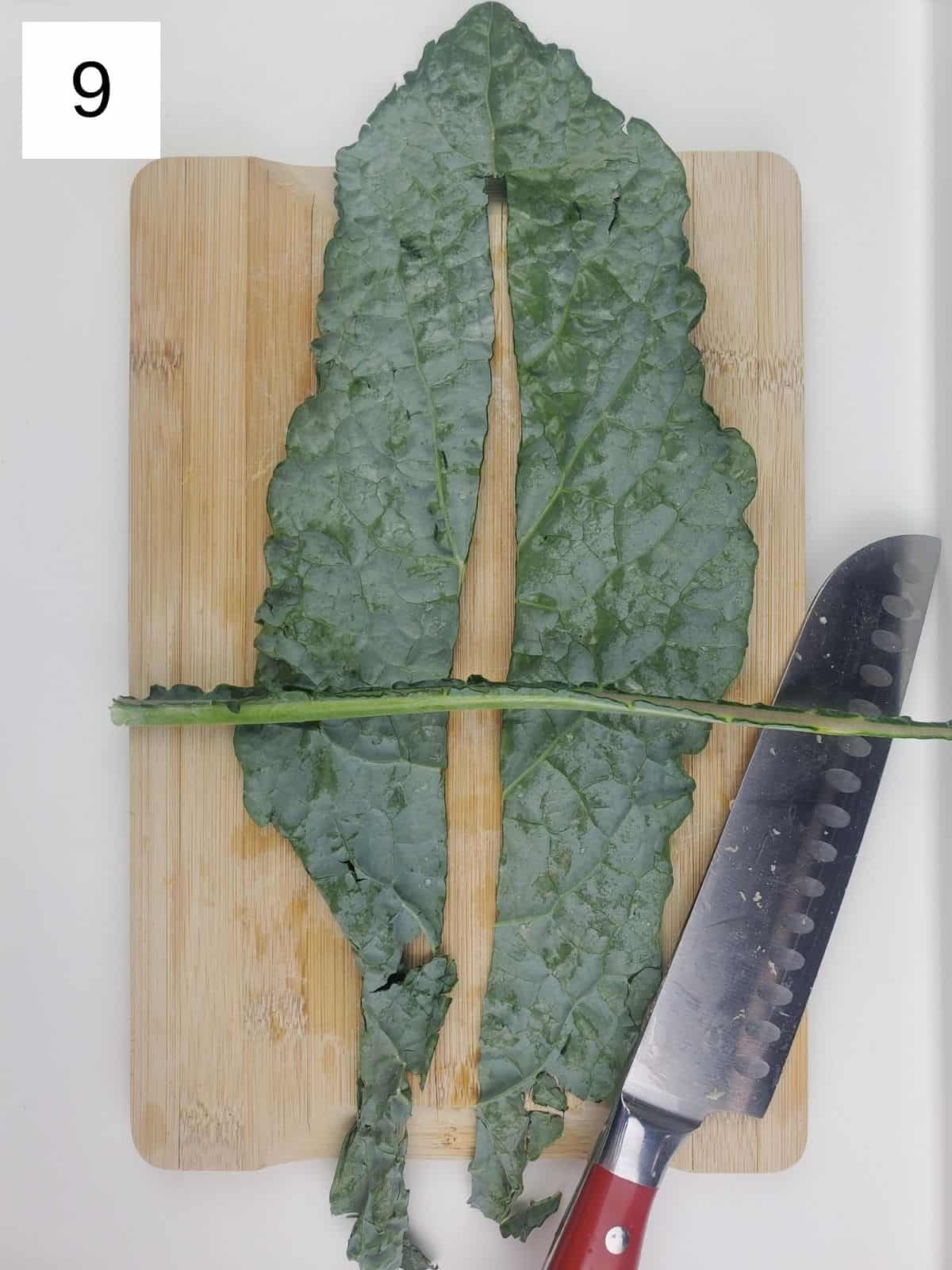
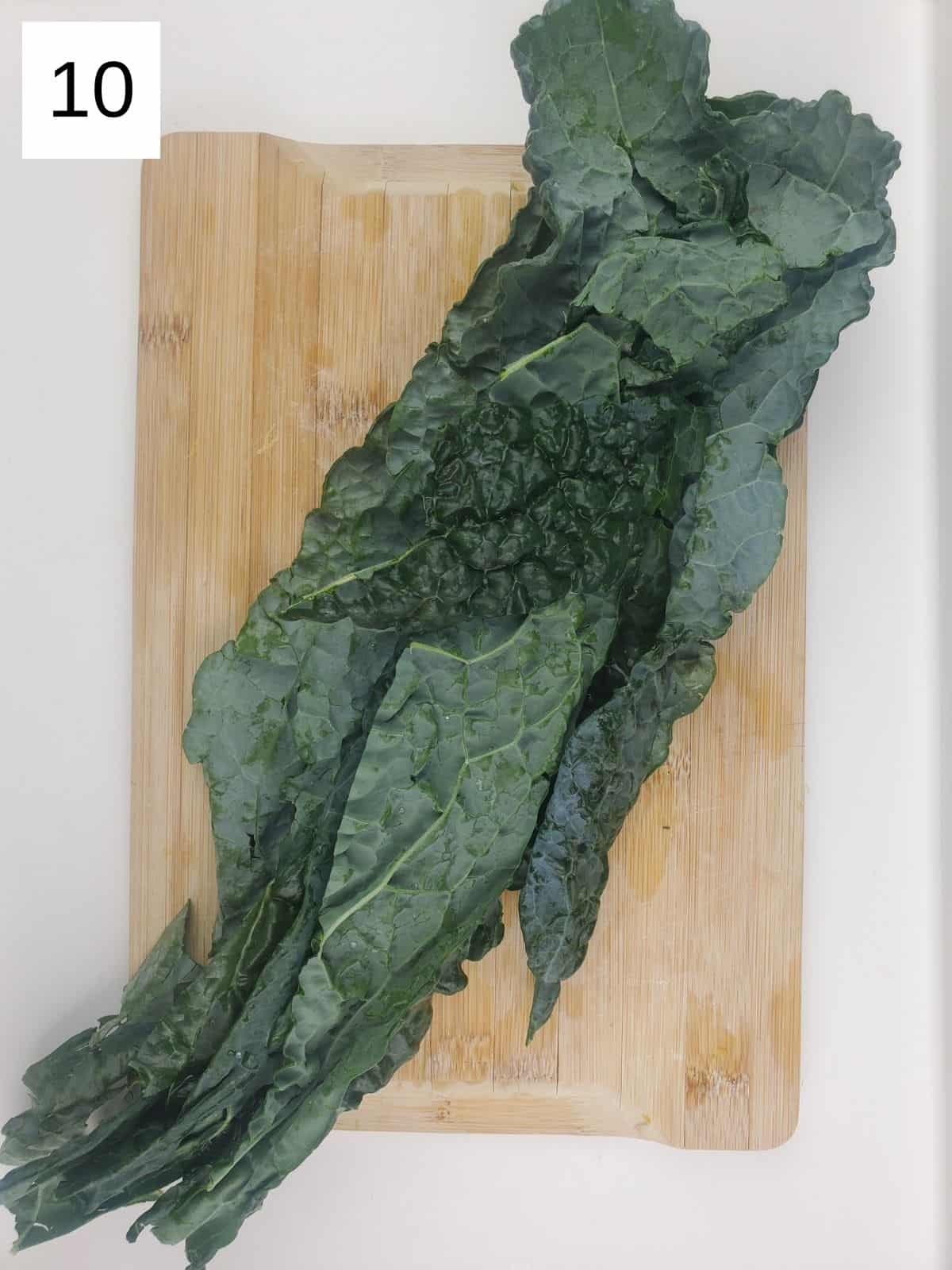
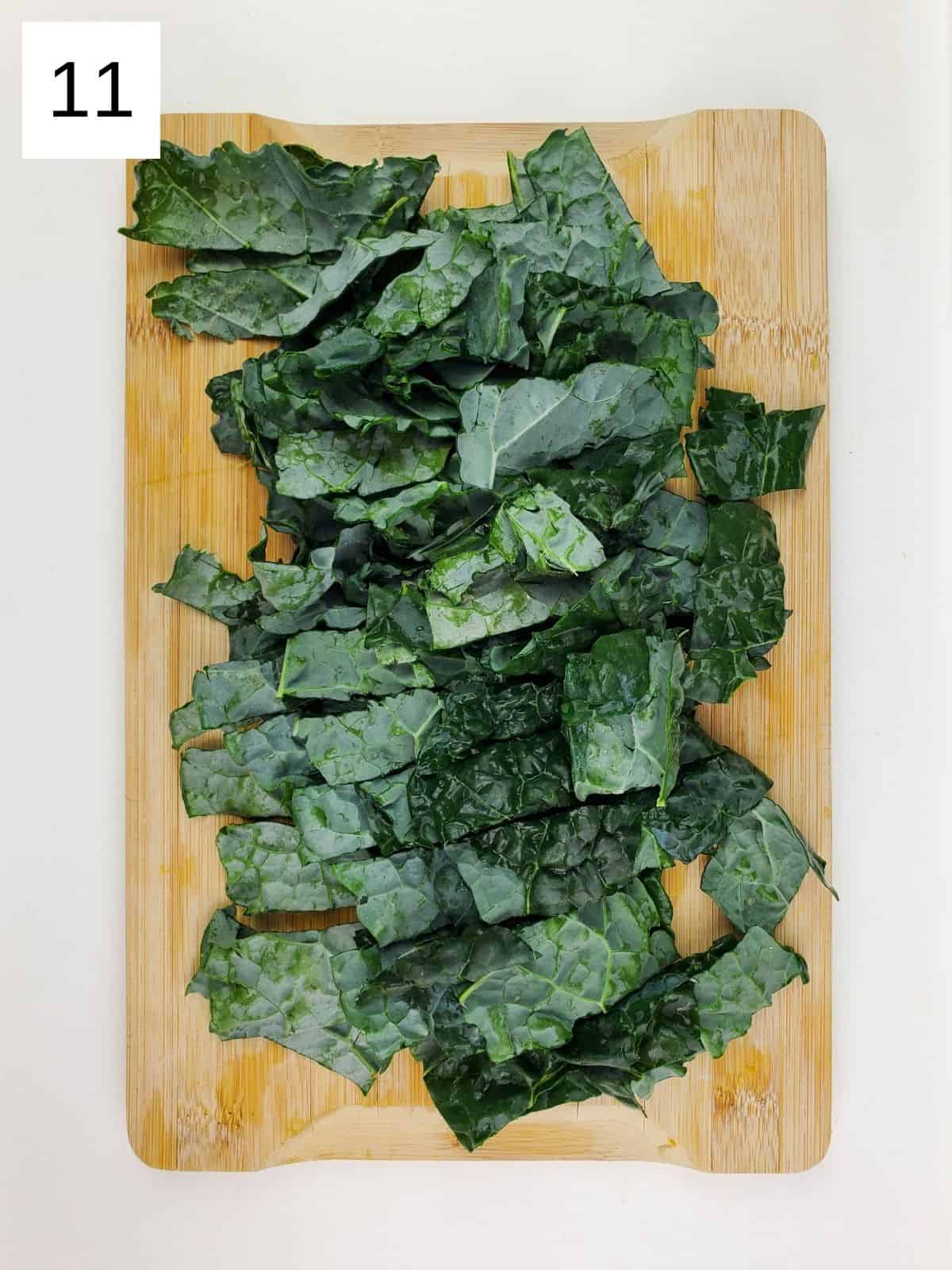
Step 5. Set the squash aside and grate your garlic and wash then chop your kale, taking care to remove the tough spines; if using baby kale, no need to prep it at all.
Drain the pasta completely and return it to the hot cooking pot once done, and put the baby kale or chopped kale on top of the hot pasta to let it wilt, stirring it in with the pasta after a minute or two to even further soften it.
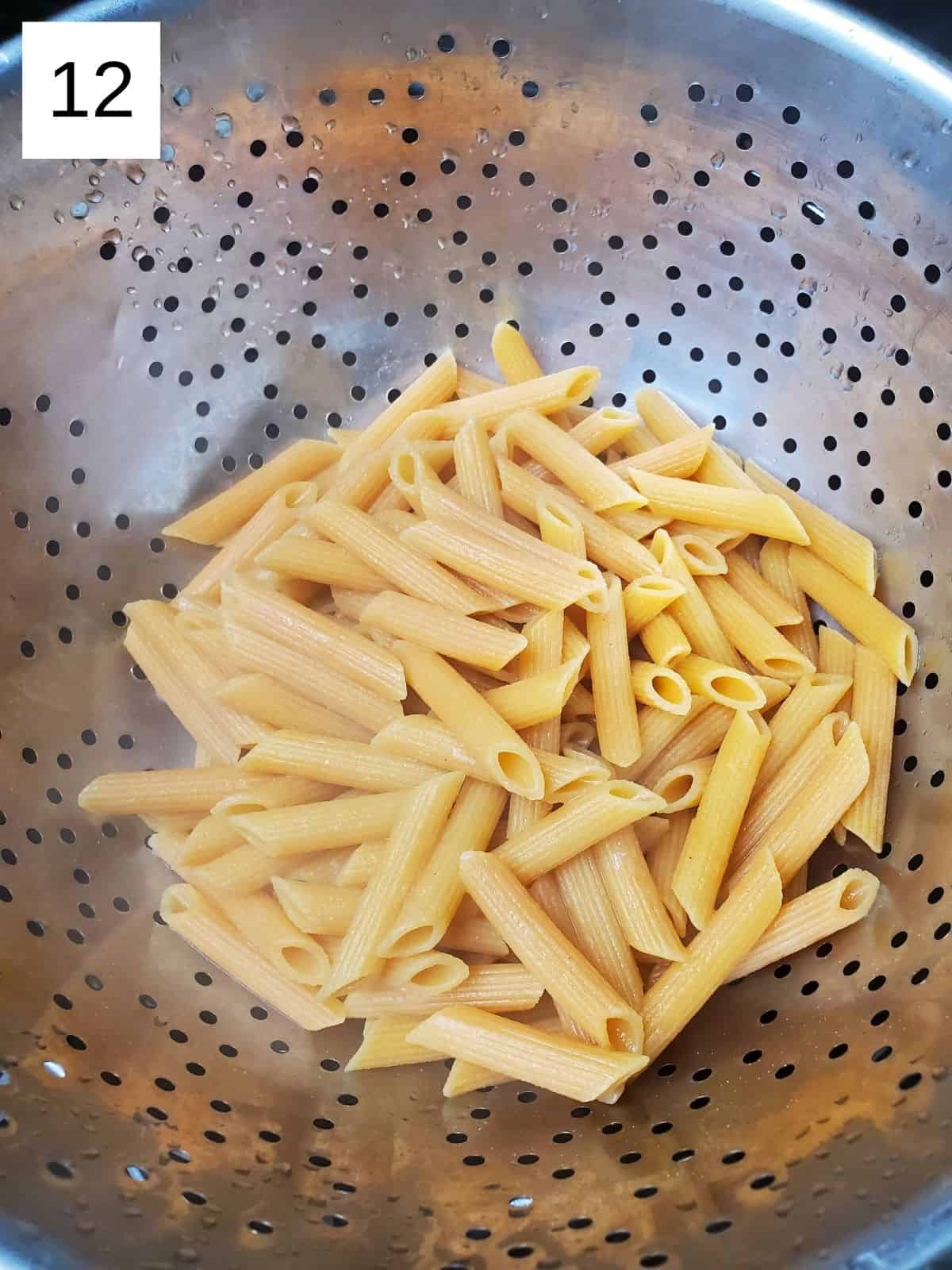
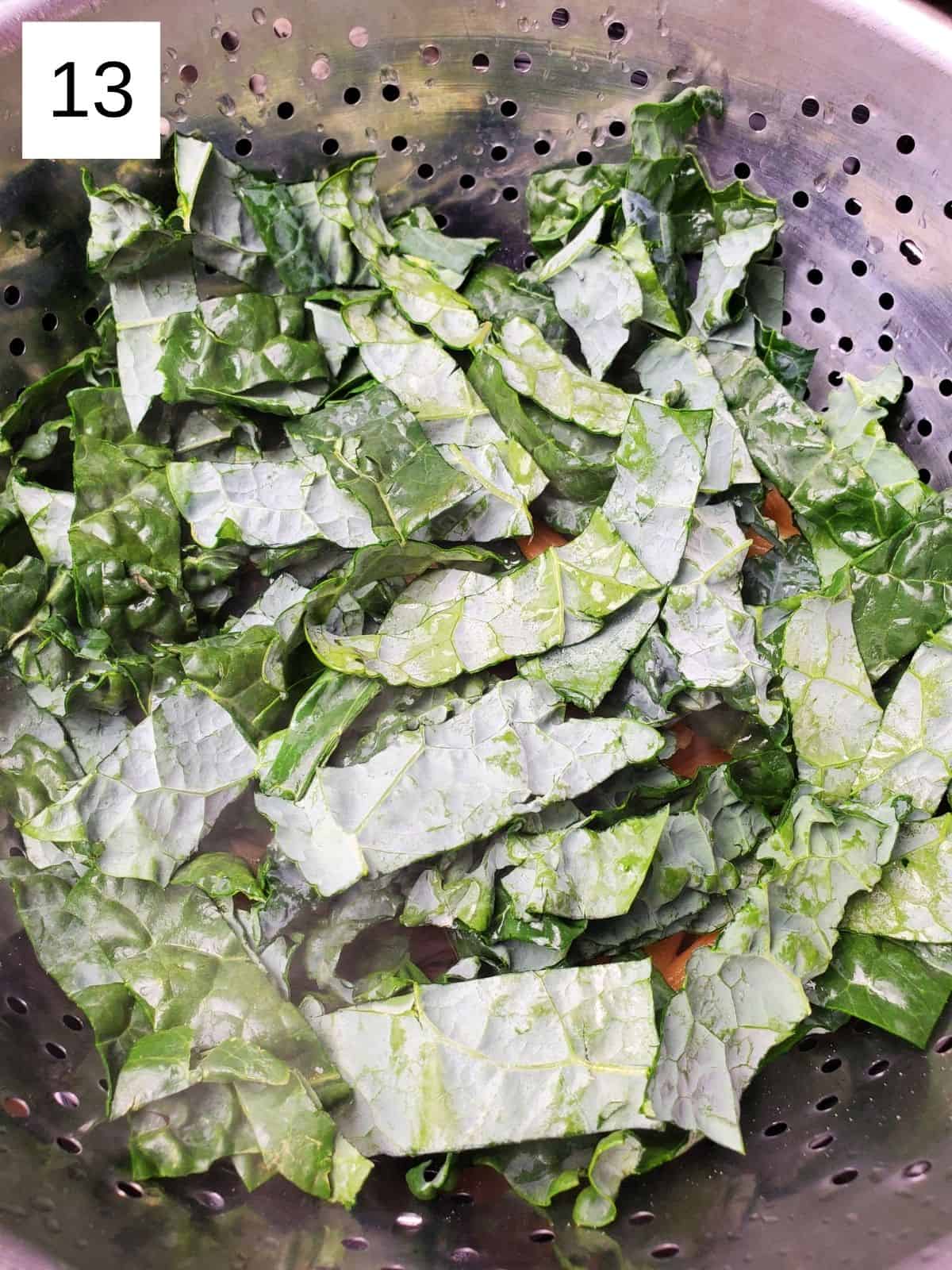
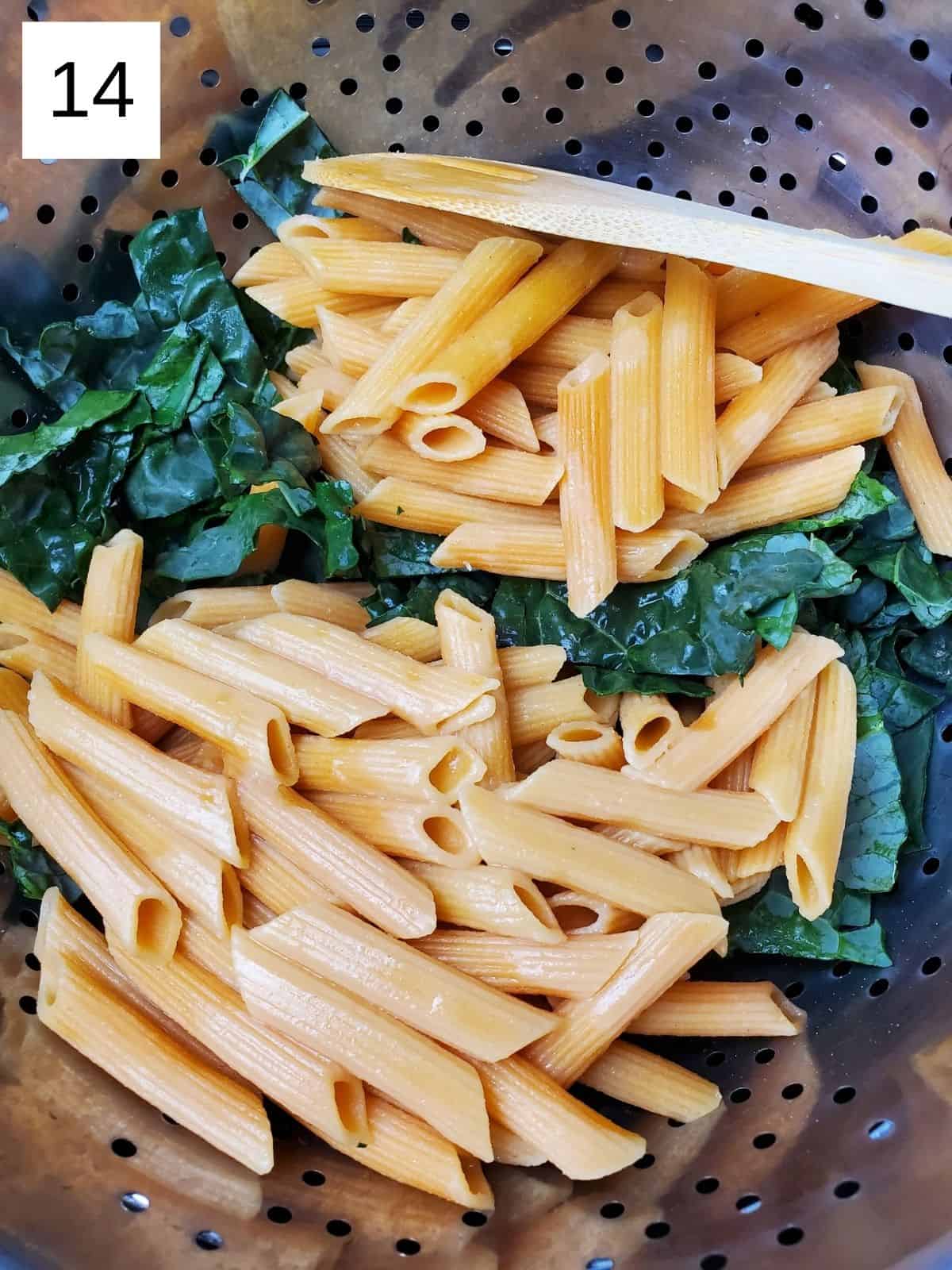
Step 6. In a large pan with tall sides, add the butter over medium-low heat and allow it to melt and start browning (about 2 minutes), then add the grated garlic and whole sage leaves and brown for 2 more minutes before adding all the squash pieces.

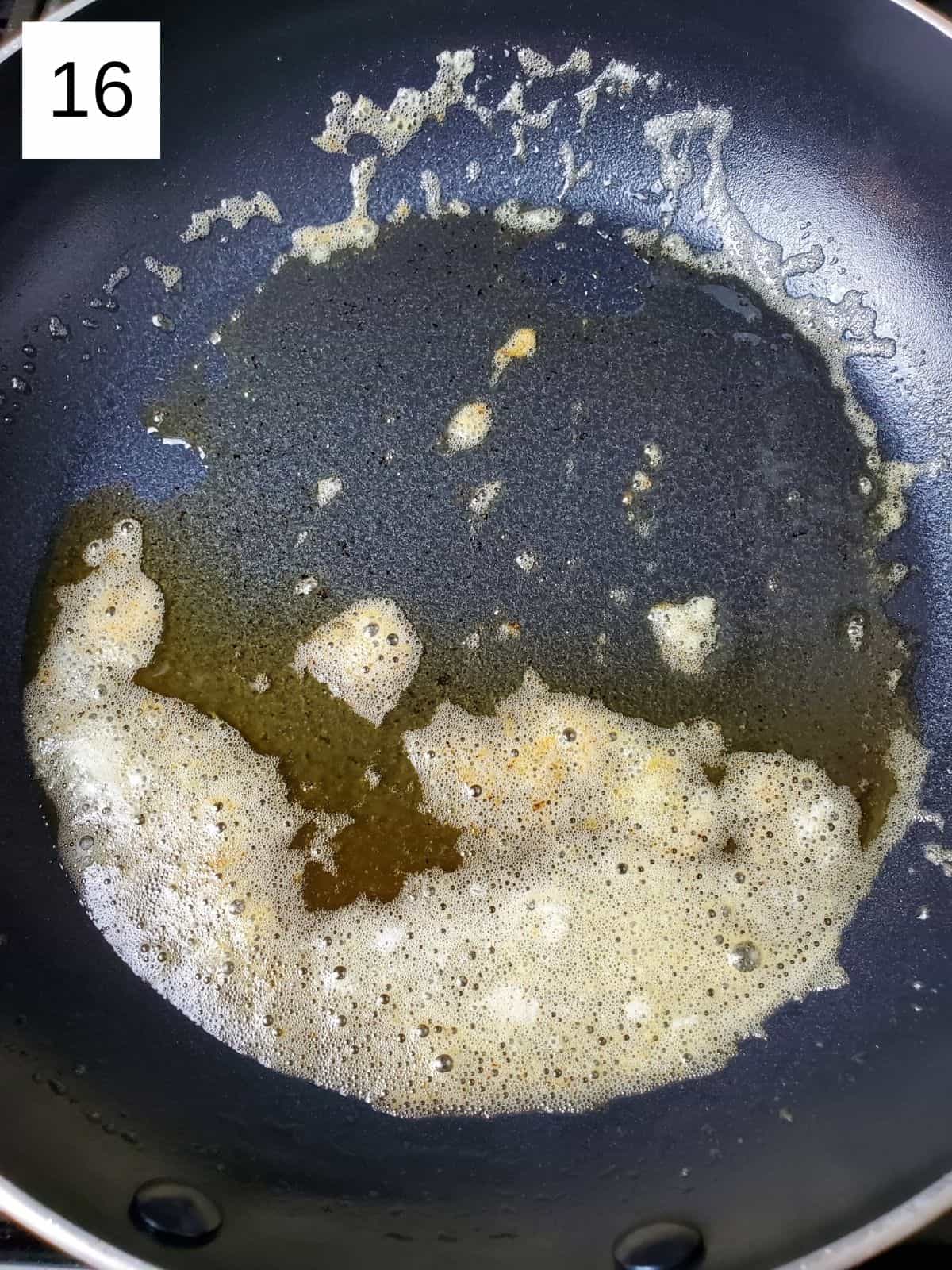
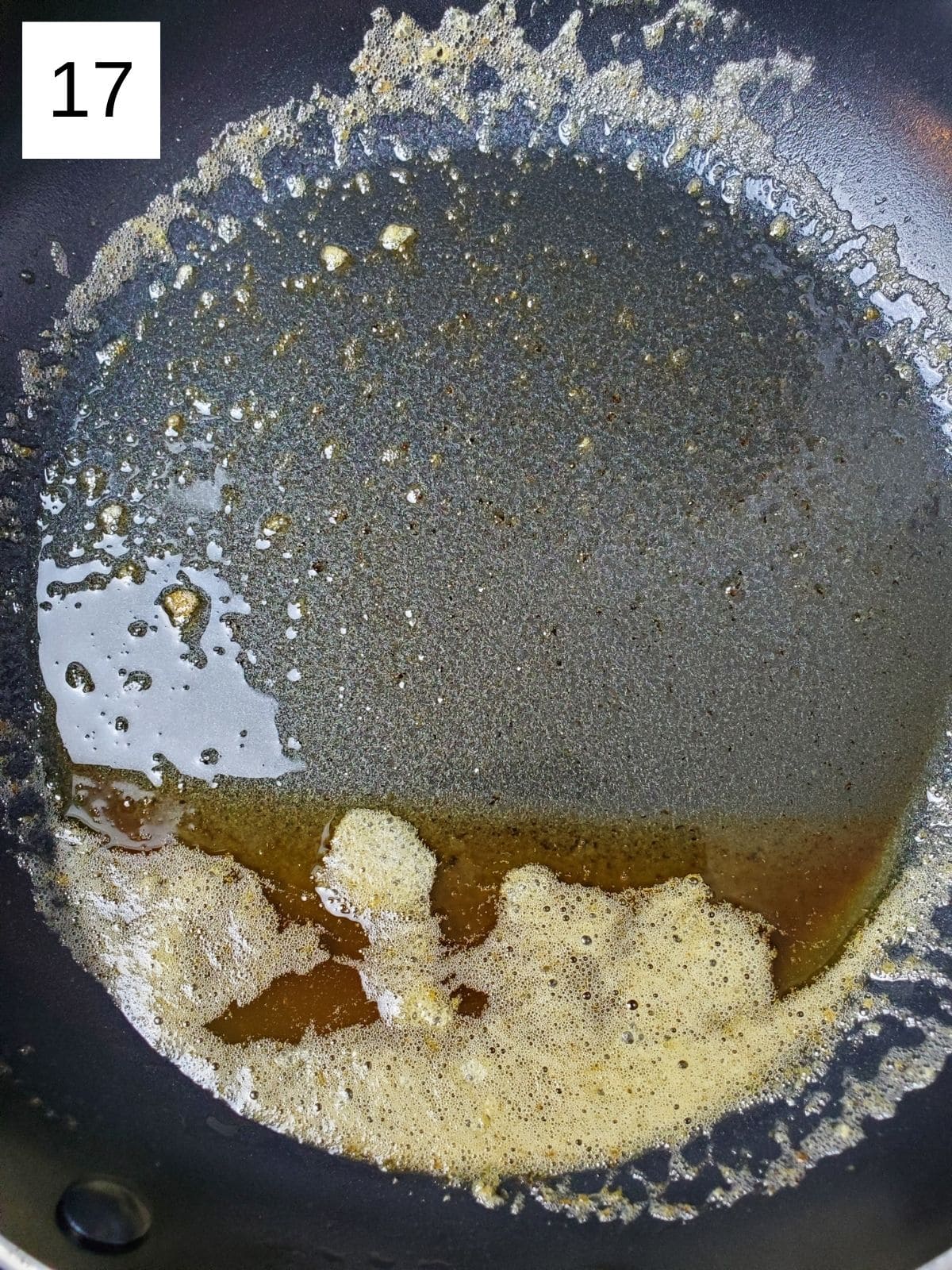
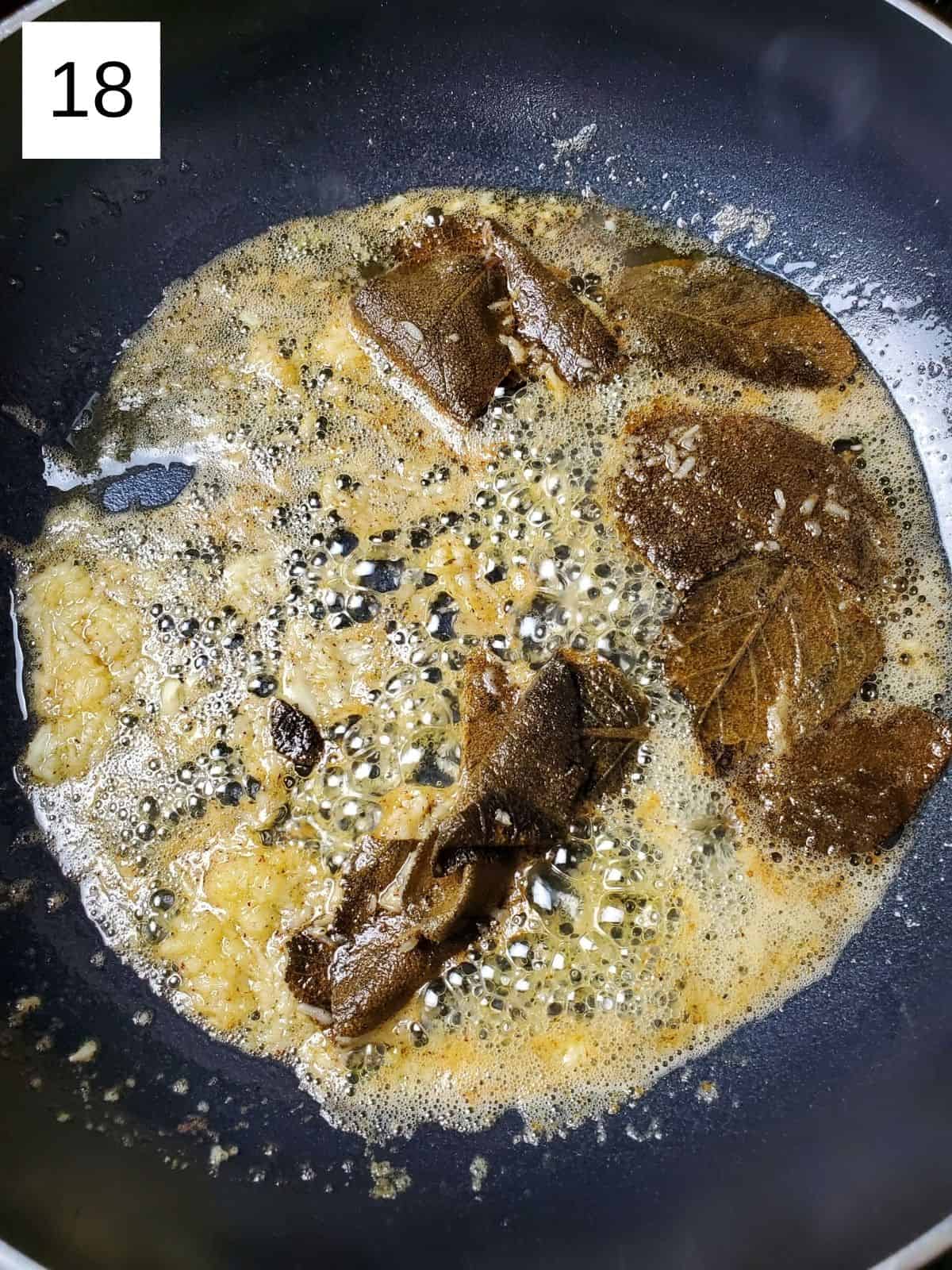

Step 7. Cook the cubed squash in the garlic sage butter for 20-25 minutes, letting the squash brown and start to get golden, turning the heat off once the squash is fork-tender and lightly browned. Keep the pan on the hot burner.
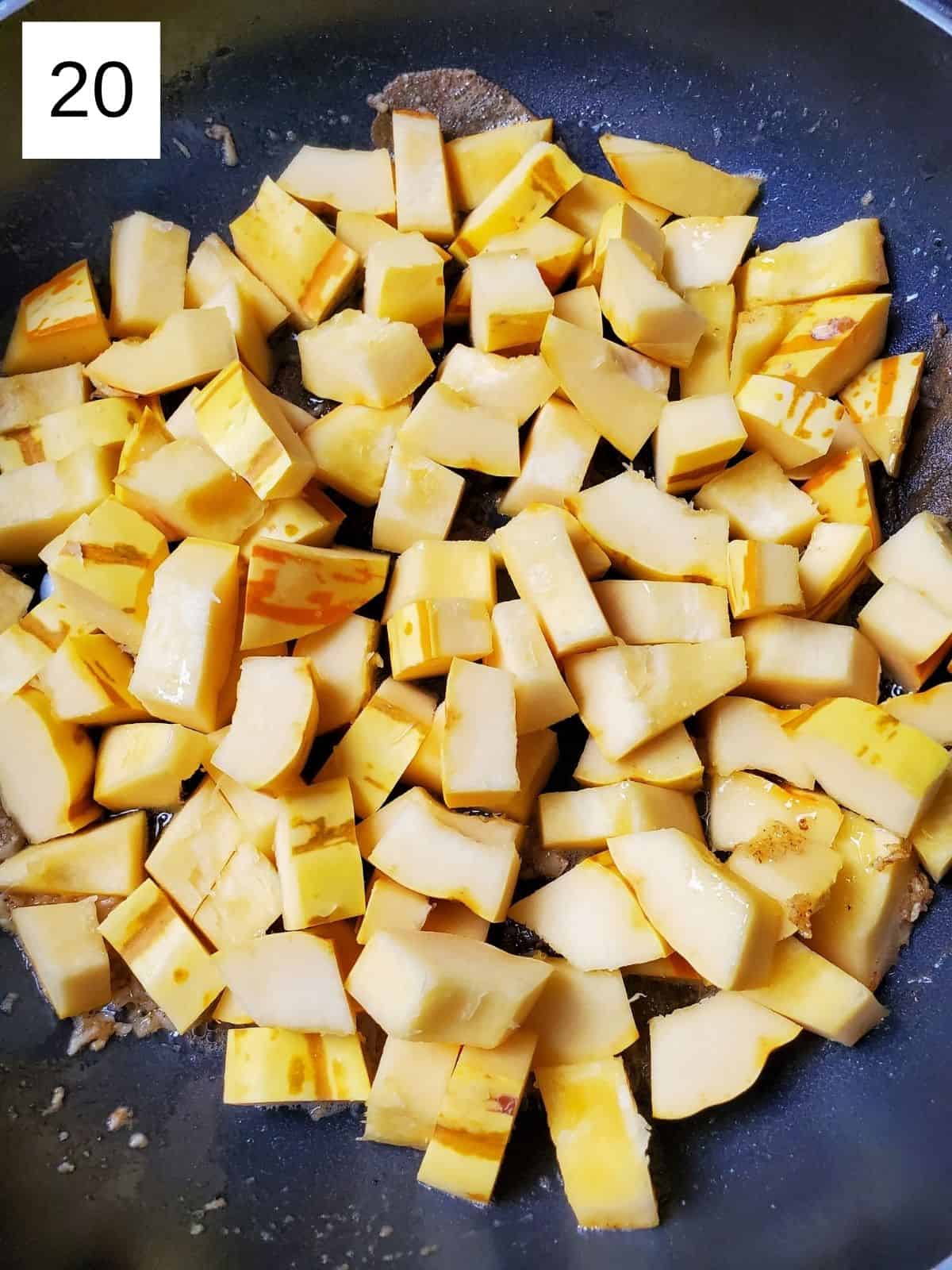
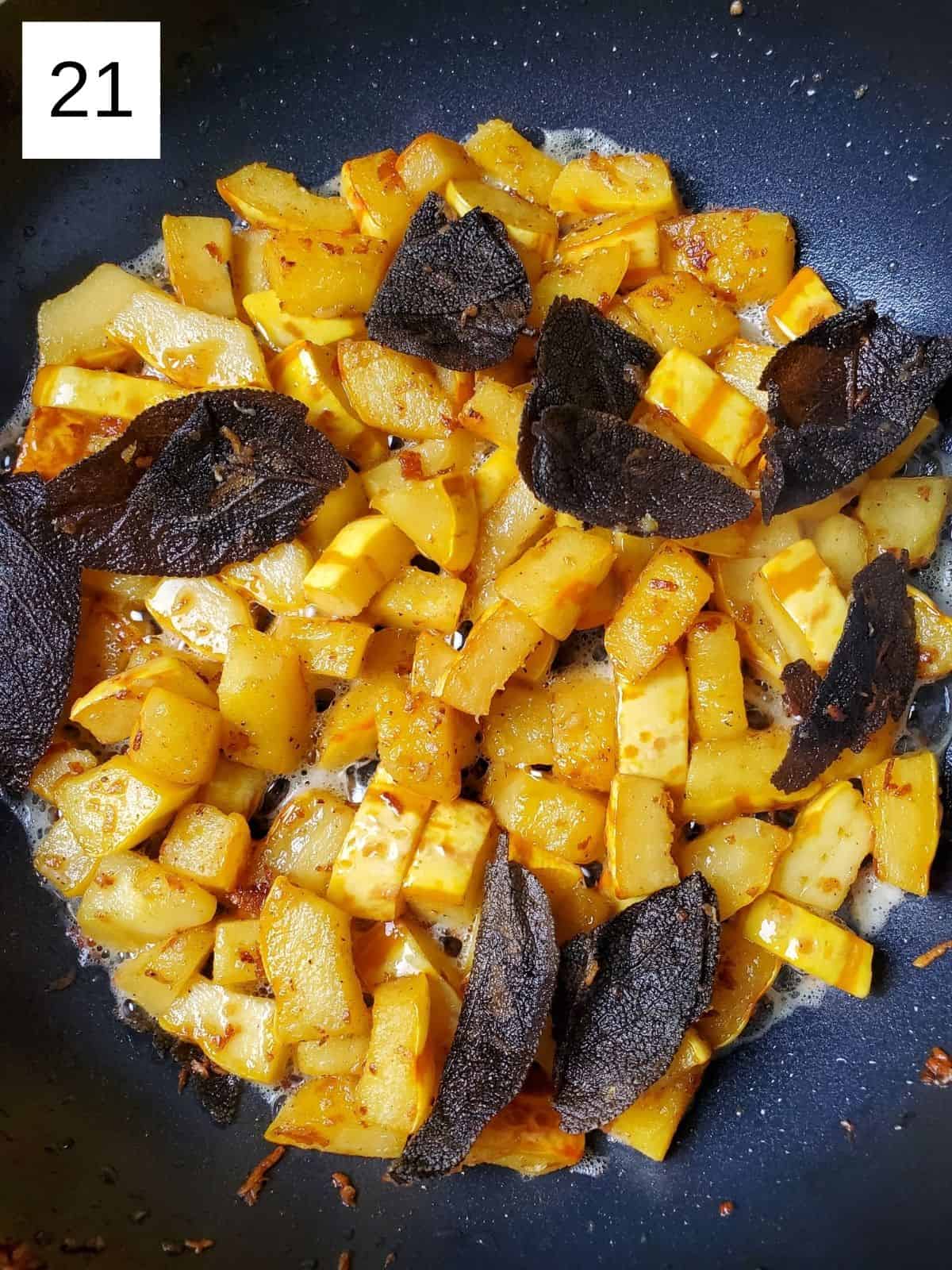
Step 8. Sprinkle on the paprika and nigella (if using) and the sea salt, then add the ricotta cheese, wilted kale, and pasta and stir everything well, allowing the cheese to warm up and mix with the squash, letting it sit for a couple minutes, if needed. Serve hot.
💡 Pro-Tip: I like to use lentil pasta for this recipe, but you can use any type of pasta you enjoy.
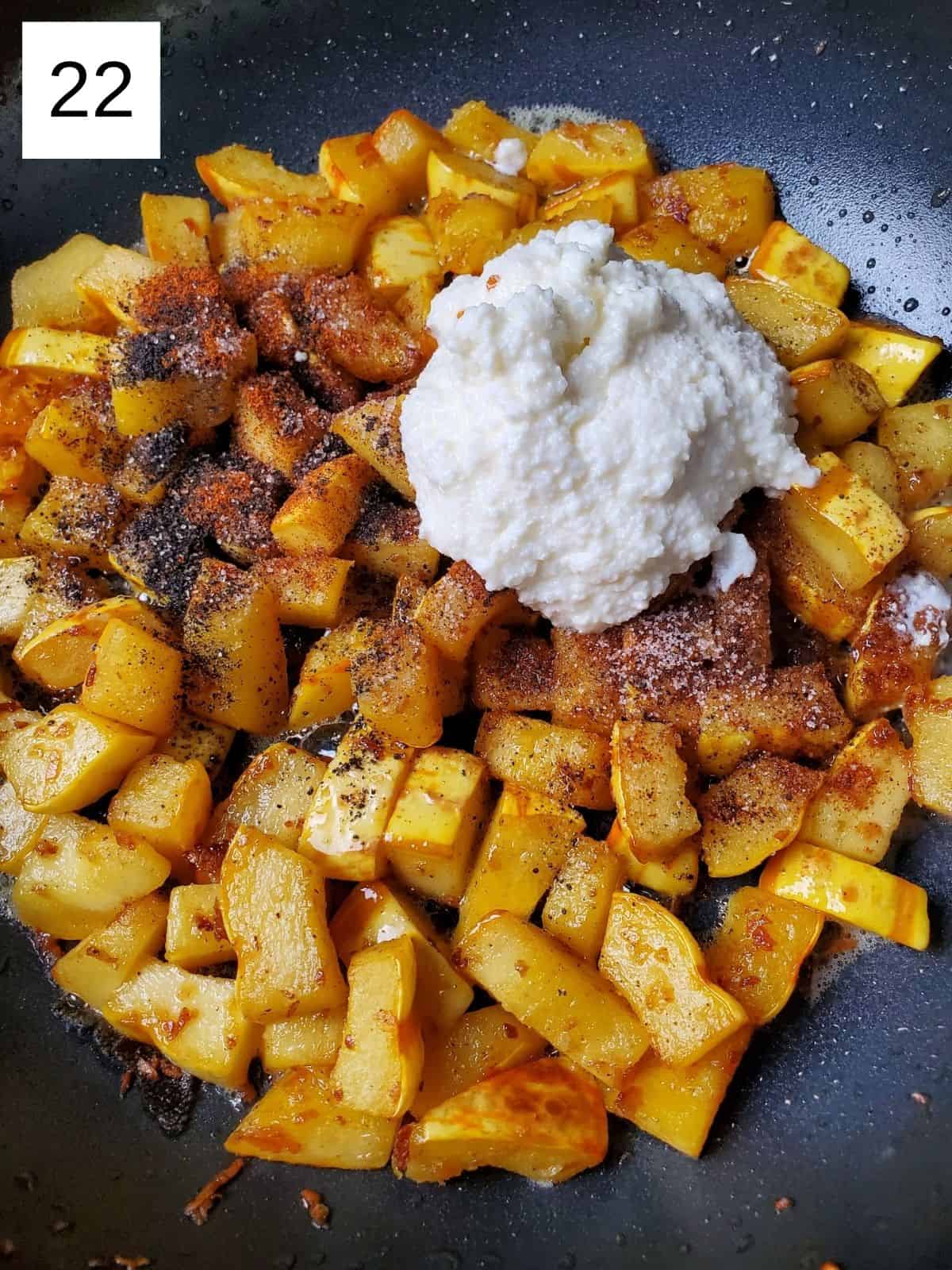
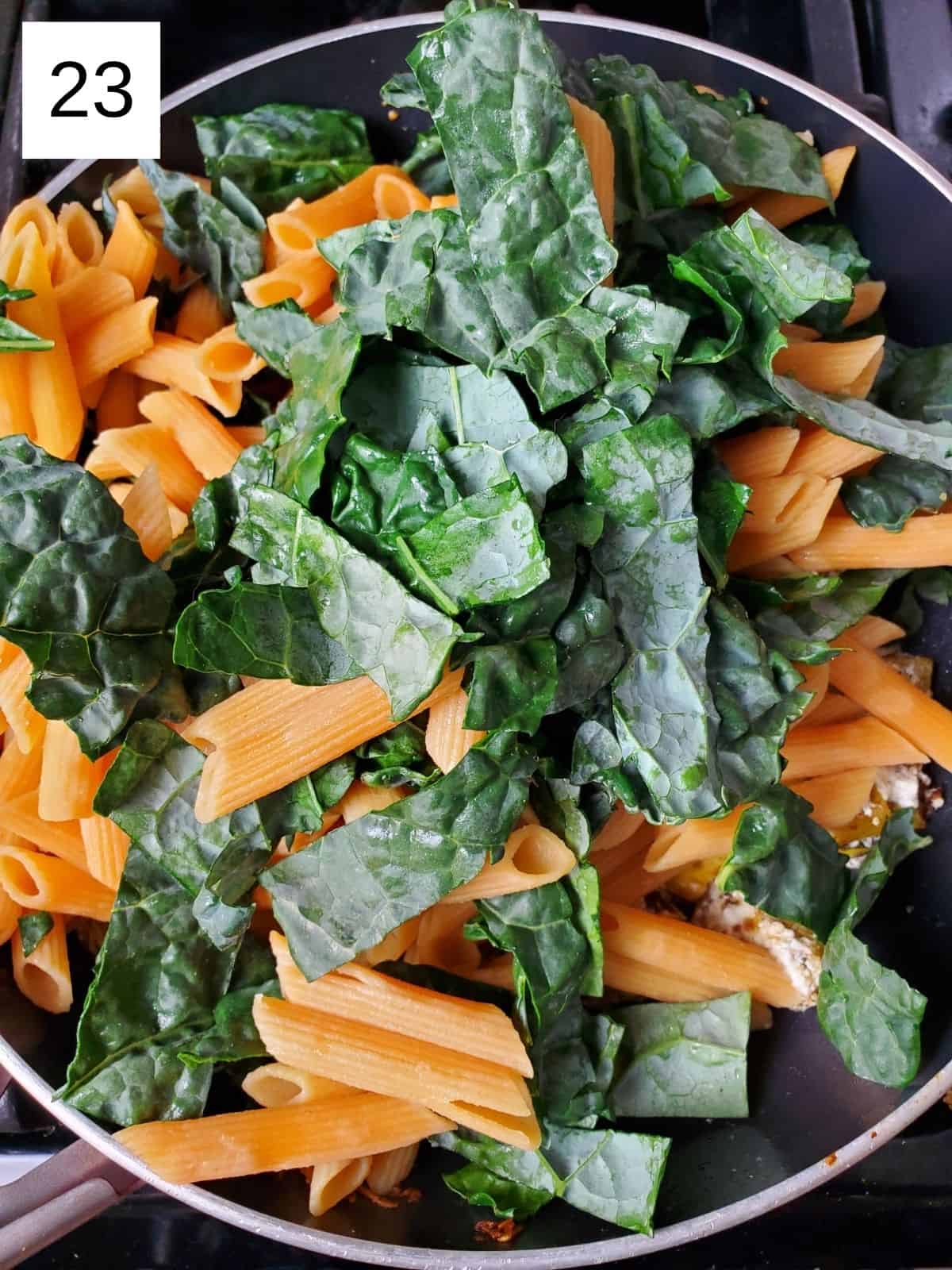
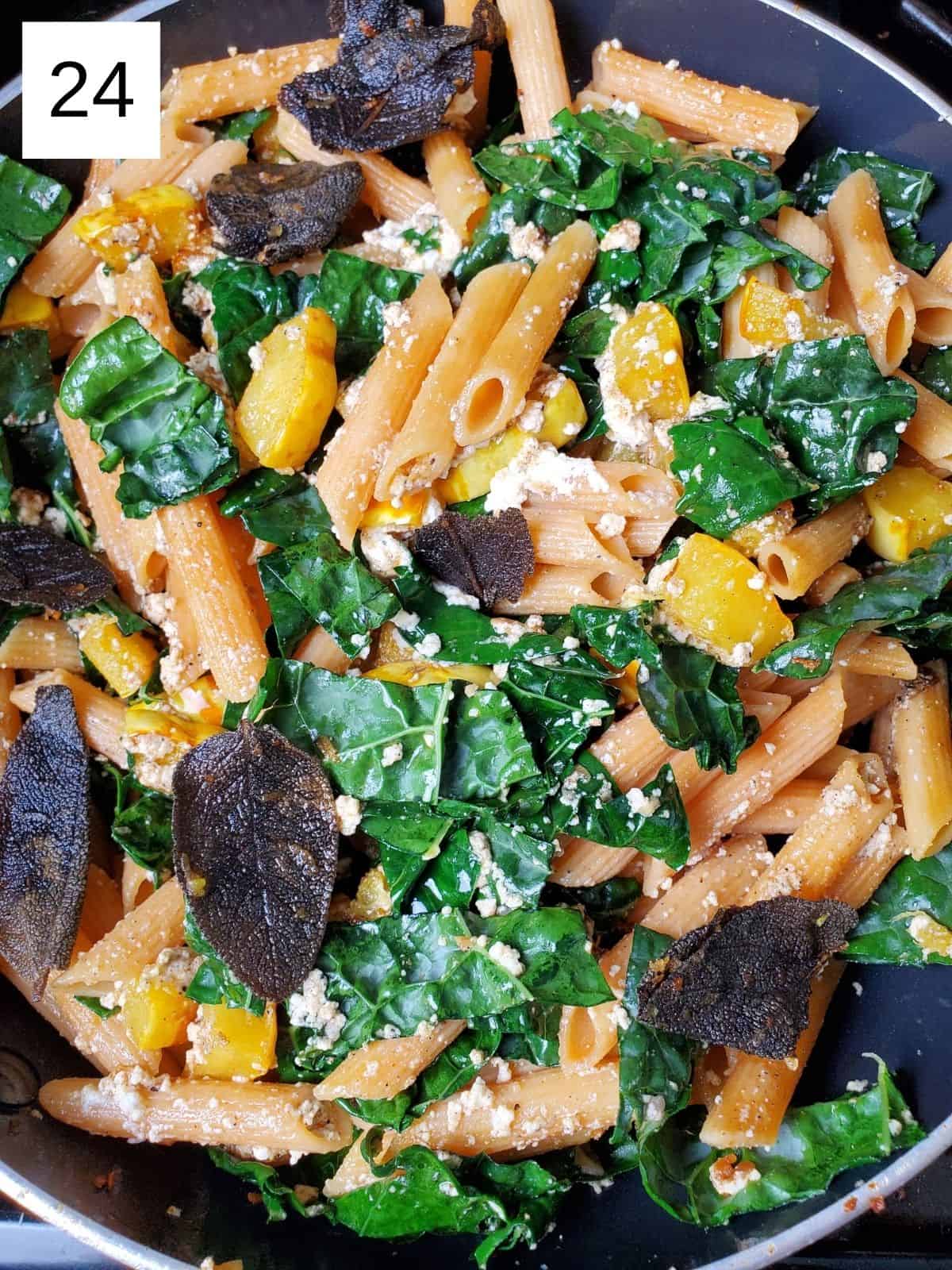
📝 Substitutions
Other Squash - other than delicata, you could also make this squash pasta with any hardier winter squash, including butternut and even honeynut squashes (the latter of which also doesn't need to be peeled).
Sage - you can omit this if you don't have it, but use fresh or frozen leaves, if possible, or swap it for thyme or fresh basil (add the latter when you add the kale), and even a dollop of lemon basil pesto.
No Garlic - you can omit the garlic in the recipe or swap it for a teaspoon of garlic powder for a more plain-flavored pasta.
Spices - if you know you don’t tolerate ground nigella seeds or ground paprika, you can swap it for a blend of other low histamine herbs and spices you think would go well.
Kale - this makes the dish even more nutritious, but while you can leave it out, you could also cook the kale during the last 5 minutes to make the bitter flavor less intense.
Pasta - I've only used lentil or chickpea pasta for this recipe, but you can use any type of pasta you enjoy.
🥘 Freezing and reheating
Honestly, I don't like to freeze this but you can. Just be sure to cook everything beforehand. Then put it into single-serve containers to easy reheating in the mivrowave or in an oven or air fryer at 380°F (195°C) for 3-5 minutes, then serve as desired.
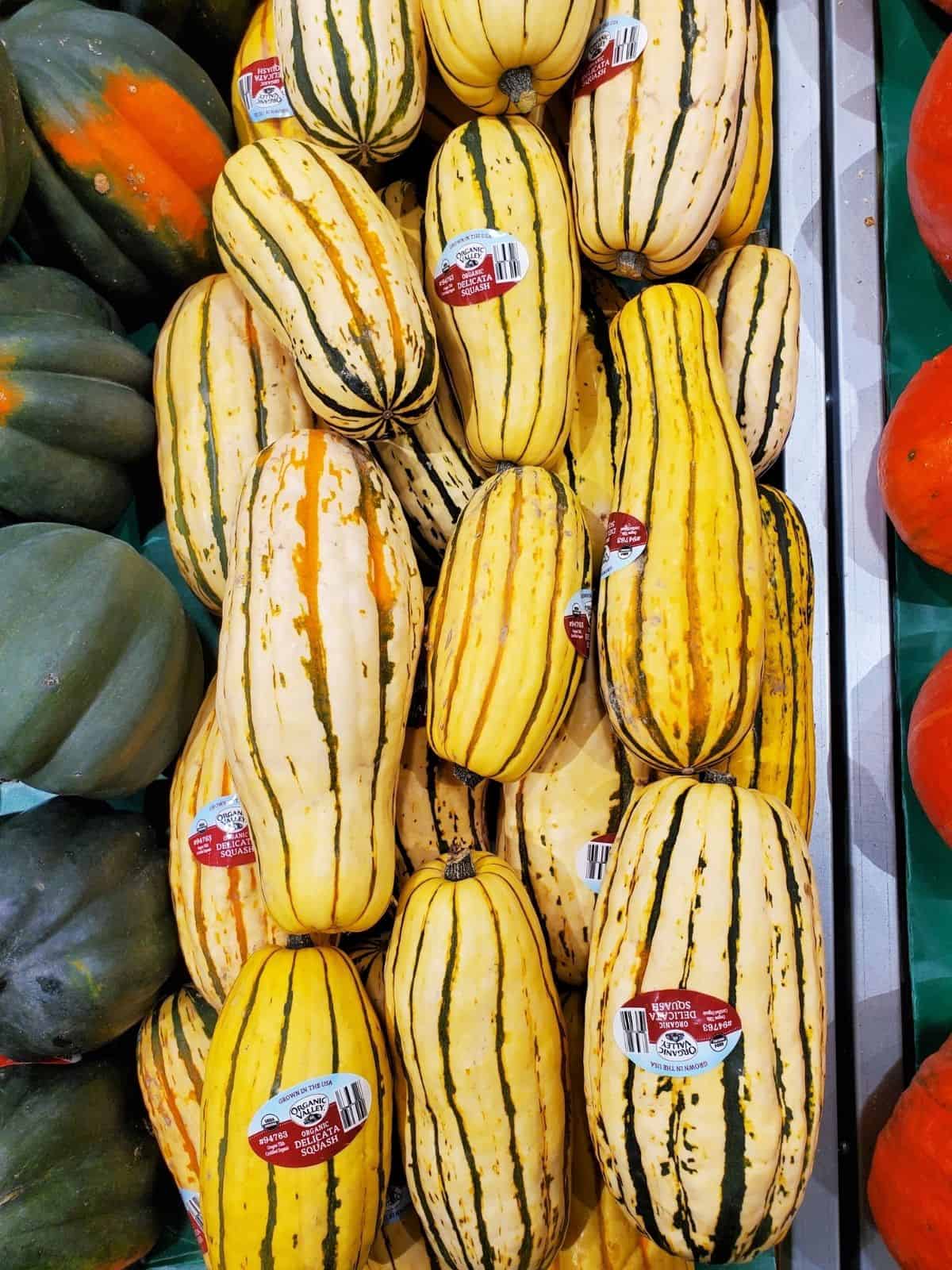
👨🏻🍳 Expert notes & tips
Can You Eat Sage Leaves?: you can totally eat the cooked sage leaves, but you may want to chop them before adding them to the brown butter, if serving this to little ones.
Squash Storage: You can store these striped winter squash on the counter or in the fridge, but mine ended up on our counter for about a month before we used them and they tasted great, so use your best judgement when storing delicatas before making this recipe.
⭐ Other squash recipes
🙋🏻♂️ Frequently asked questions
The flavor of delicata squash is somewhere between a sweet potato and a butternut squash, more mild than almost any other winter squash, which means it takes great to added seasonings.
Delicata squash will be ready to harvest shortly after the color changes to a bright yellow or white with green stripes, when it's a bit too hard to pierce with your fingernail. Generally the delicatas in the market are all already ripe, with the same yellow-green color scheme.
Yes, if you're going to keep your squash around for more than 2-3 days, you can keep it in the fridge for up to 2 months. But if it starts to feel even a little soft, it's start to cook it in the next day or 2.
Yes! Delicata squash peel is completely edible, and generally decribed as paper-thin, which is qute accurate.
Yes, you should remove the seeds from delicata squash before cooking, but they are edible if you wash and toast them, just like pumpkin seeds.
While butternut squash are generally larger than delicatas, they're also a deeper orange color and have a stronger squash flavor, though both squashes have very similar price points and availability.
🧂 What to serve with delicata squash pasta
As always, if you like the recipe, I really appreciate a 5-star review or comment!
📖 Recipe

Delicata Squash Pasta (Brown Butter Sage)
Ingredients
- 1 medium delicata squash cubed (~1lb.)
- 3 Tablespoons unsalted butter
- 10 sage leaves fresh or frozen
- 2-3 15g garlic cloves, grated or minced
- ½ teaspoon sweet paprika optional
- ½ teaspoon ground nigella seeds optional
- 1 teaspoon sea salt
- ½ Cup fresh ricotta cheese
- 4 large kale leaves chopped & spines removed (alt. 1 Cup baby kale)
- 8 ounces uncooked pasta
- water & salt to cook pasta
Instructions
- Put a pot of water on to boil, adding salt to the water, if desired. While the water heats up, wash and lightly scrub your delicata squash; since the skin is edible, delicata squash doesn't need to be peeled, so we want to make sure the outside is clean enough to eat.
- Once clean, cut off the top & bottom then cut the squash in half and use a spoon to scoop out the seeds and innards, and either set aside the seeds to clean and roast or discard everything (just like pumpkin seeds, delicata squash seeds are totally edible once cooked!).
- Next slice each squash half lengthwise into four to six long pieces, so you have eight to ten pieces in total. These long pieces will be much easier to cut into oblong cubes, so hold each half together so that you're cutting all four long pieces at once, and chop each half into cubes.
- Once the squash is all cut, your water should be ready to add the pasta, so pour in your pasta and set a timer according to the package instructions.
- Set the squash aside and grate your garlic and wash then chop your kale, taking care to remove the tough spines; if using baby kale, no need to prep it at all.
- Drain the pasta completely and return it to the hot cooking pot once done, and put the baby kale or chopped kale on top of the hot pasta to let it wilt, stirring it in with the pasta after a minute or two to even further soften it.
- In a large pan with tall sides, add the butter over medium-low heat and allow it to melt and start browning (about 2 minutes), then add the grated garlic and whole sage leaves and brown for 2 more minutes before adding all the squash pieces.
- Cook the cubed squash in the garlic sage butter for 20-25 minutes, letting the squash brown and start to get golden, turning the heat off once the squash is fork-tender and lightly browned. Keep the pan on the hot burner.Sprinkle on the paprika and nigella (if using) and the sea salt, then add the ricotta cheese, wilted kale, and pasta and stir everything well, allowing the cheese to warm up and mix with the squash, letting it sit for a couple minutes, if needed. Serve hot.

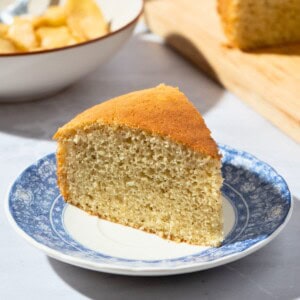











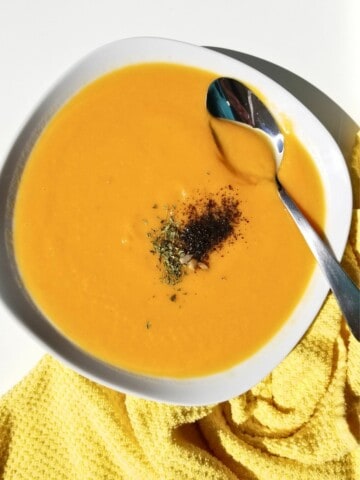
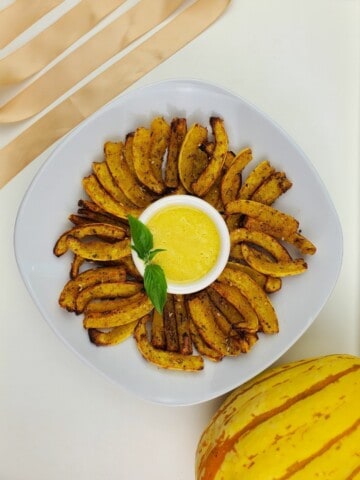
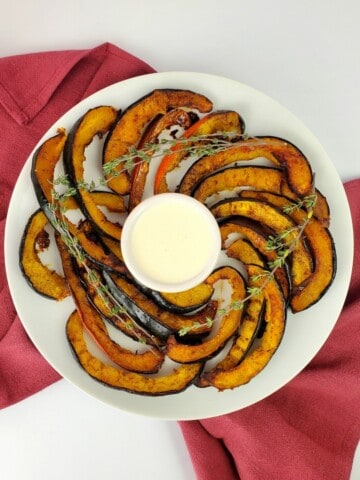
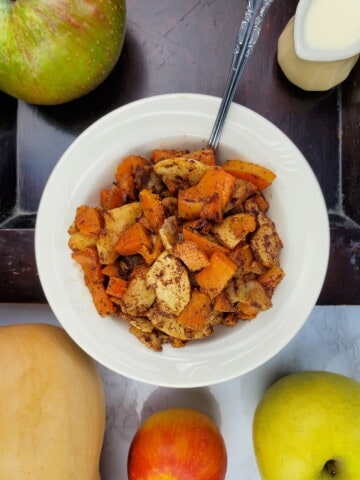

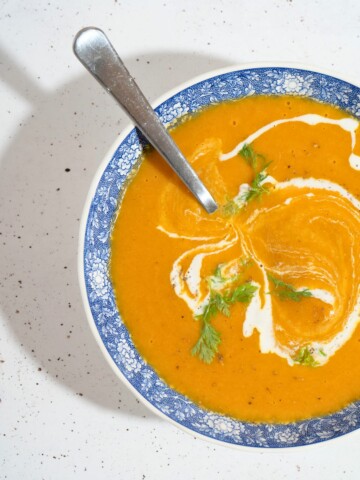
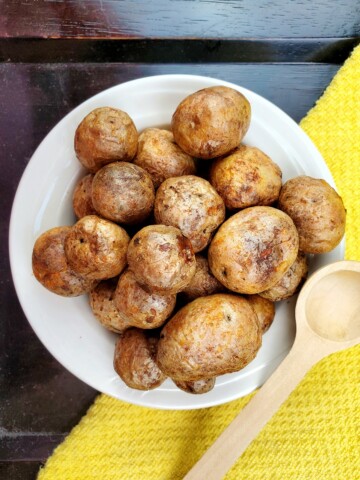
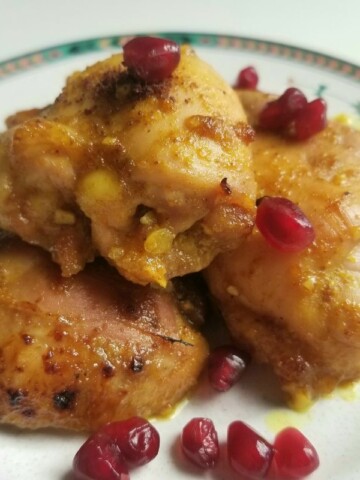
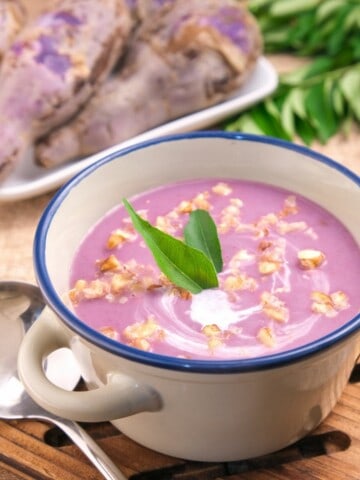
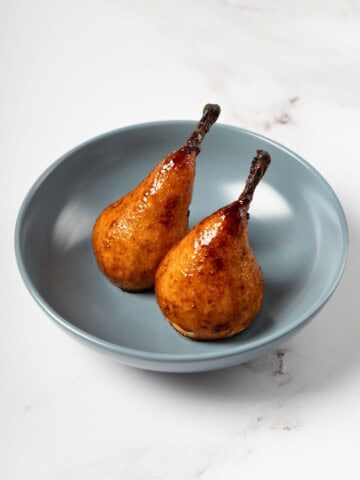
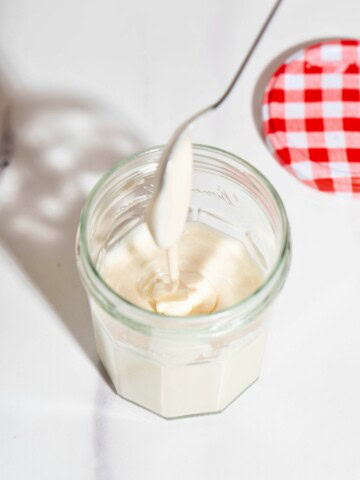
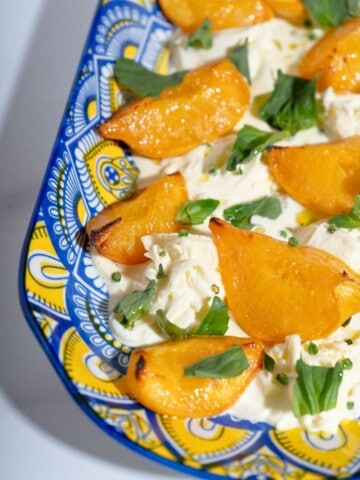
Comments
No Comments